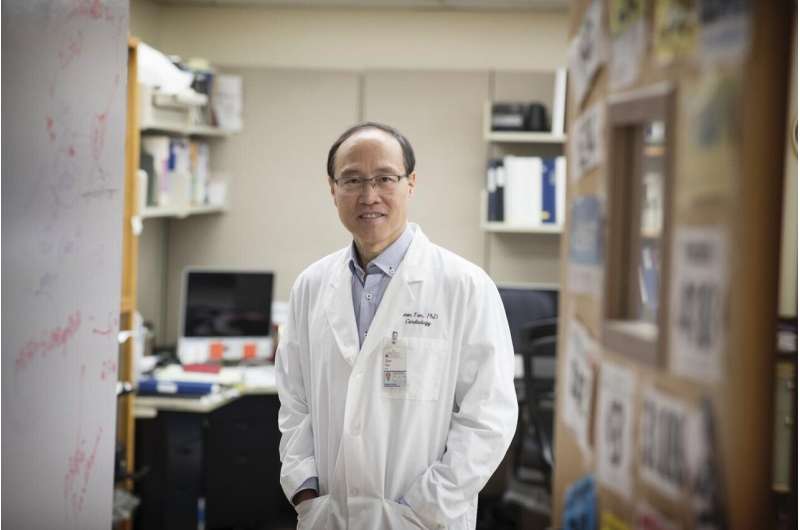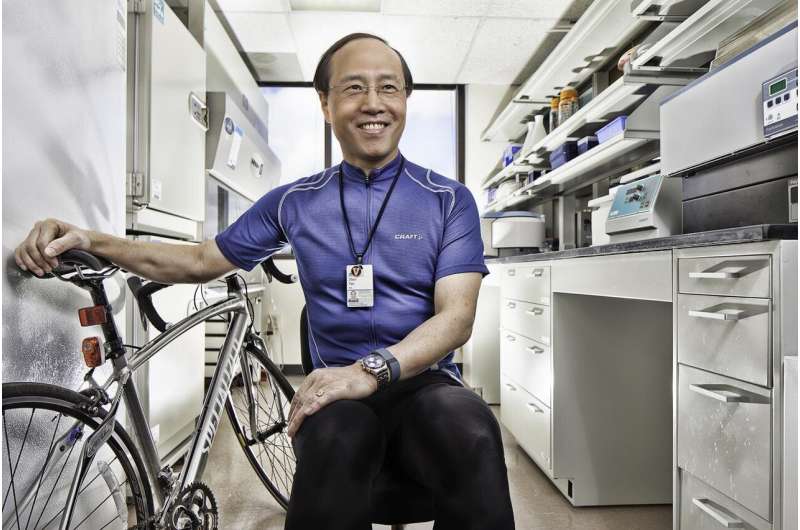Scientists aim to treat, prevent disease by understanding benefits of exercise

A top exercise researcher and colleagues at the University of Virginia School of Medicine have launched an ambitious effort to understand the whole-body benefits of exercise so that doctors can use that information to prevent and treat disease.
Zhen Yan, Ph.D., and his collaborators aim to identify the sources, functions and targets of the molecules that provide exercise's well-documented health benefits. By understanding this, doctors will better understand how exercise helps fend off disease, and they may be able to design drugs to mimic those benefits for people who cannot exercise, such as those with limited mobility. The cutting-edge research could open new doors both for preventing and treating many common illnesses, the researchers hope.
"No one would dispute that physical activity or regular exercise is the best measures for health promotion and disease prevention," said Yan, director of the Center for Skeletal Muscle Research at UVA's Robert M. Berne Cardiovascular Research Center. "In fact, the health benefits of exercise are way beyond our imagination. The underlying reasons for the superb health benefits of exercise are being uncovered by many talented and passionate scientists around the world."
Understanding How Exercise Improves Health
The UVA researchers have recently joined a national consortium seeking to create a "molecular map" of exercise benefits. Known as the Molecular Transducers of Physical Activity Consortium, or MoTrPAC, the group includes researchers at top institutions across the country, including Harvard, Duke, Stanford and Mayo Clinic.
The consortium came about after the National Institutes of Health invited Yan and a dozen other prominent scientists to a roundtable discussion in 2010 about the future of exercise research and the obstacles that stood in its way. The NIH then set aside almost $170 million for MoTrPAC's research—believed to be the agency's largest-ever investment into the mechanisms of how physical activity improves health and prevents disease.
"The program's goal," Yan explained, "is to study the molecular changes that occur during and after exercise and ultimately to advance the understanding of how physical activity improves and preserves health."

The consortium is looking at exercise benefits in both humans and animal models. Initial animal research was conducted at Harvard, the University of Iowa and the University of Florida. In the latest round, UVA is joined by the University of Missouri, the University of Kansas Medical Center and the University of California, Los Angeles.
The vast amount of information collected as part of the project so far has poised the UVA team to make "unprecedented" advances, Yan reports. He and his multi-disciplinary team will employ advanced computer algorithms to sift through the heaps of data to identify specific molecules to study. They will then conduct state-of-the-art research in lab mice using gene editing, combined with a wide range of functional assessment, including muscle, cardiac, metabolic and cognitive/mental functions. This will let them determine the effects the molecules have and lay a foundation for doctors to harness the molecules to benefit human health in the future.
Yan's team will work closely with colleagues at Stanford, who will conduct advanced "multiomics" analyses, meaning they will bring together data on genes, cellular proteins and much more to obtain a more holistic understanding of exercise's benefits to the body.
UVA's research team includes Yan, of the Robert M. Berne Cardiovascular Research Center and the Departments of Medicine, Pharmacology and Molecular Physiology and Biological Physics; Wenhao Xu, Ph.D., of the Department of Microbiology, Immunology and Cancer Biology; Chongzhi Zang, Ph.D., of UVA's Center for Public Health Genomics, the Department of Public Health Sciences and the Department of Biochemistry and Molecular Genetics; Matthew Wolf, MD, Ph.D., of the Department of Medicine's Division of Cardiovascular Medicine and the Robert M. Berne Cardiovascular Research Center; Thurl Harris, Ph.D., of the Department of Pharmacology; and Alban Gaultier, Ph.D., and John Lukens, Ph.D., both part of UVA's Department of Neuroscience and the Center for Brain Immunology and Glia (BIG).
"It is well known that exercise is one of the best treatments for mood disorders," Gaultier said. "We are excited to test the group discoveries using animal models of anxiety and depression."
"This is an exciting opportunity for team science," Zang said. "I am happy to work with colleagues at UVA and across the country and use data-science approaches to unravel the complex molecular effects of exercise."
UVA's effort has received almost a half-million dollars in backing from the NIH's fund for MoTrPAC's research.
"Our research team encompasses exceptional talents. The collective wisdom and expertise of the team at UVA and MoTrPAC will allow us to reach a level that we would not be able to reach by an individual," Yan said. "It is an unprecedented opportunity in our lifetime to tackle this incredibly important question to mankind."



















